Bartosz Domiczek won Ronen Bekerman’s CABINS 3D Challenge with his stunning set of images entitled “Northern Wisps”. We caught up with him to ask what went into the making of these images!
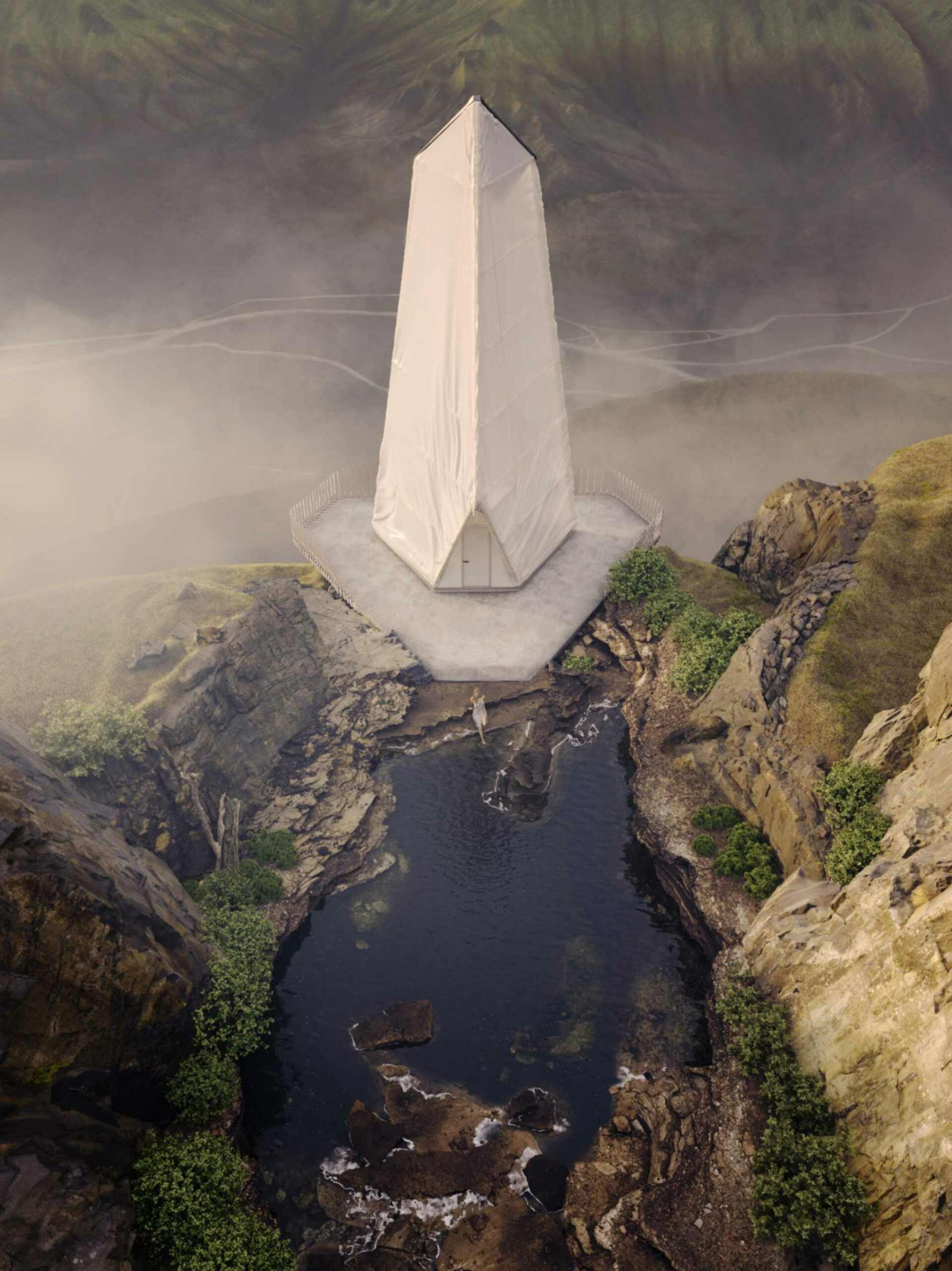
Read about the making of Nothern Wisps!
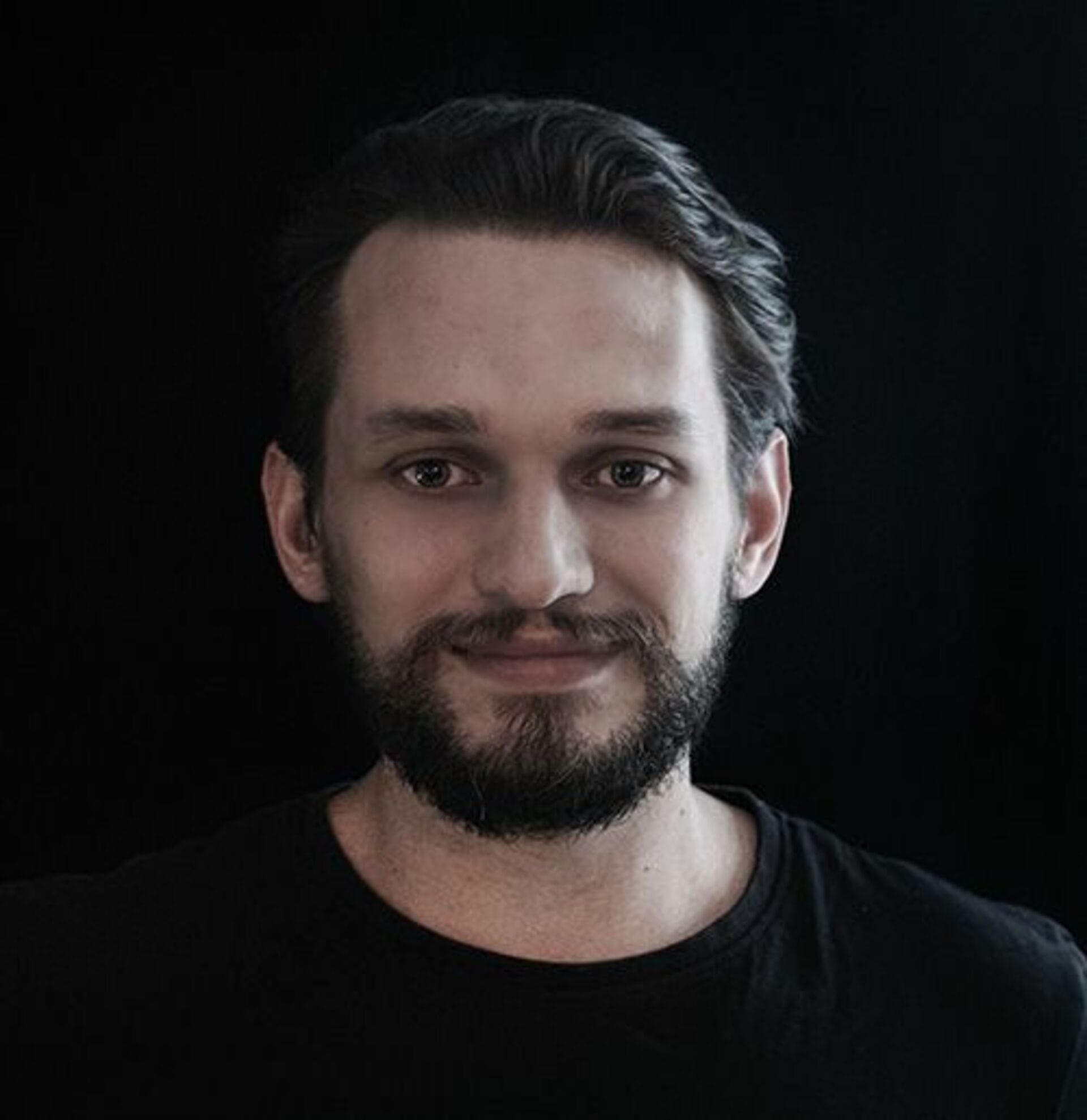
Tell us a little about yourself – what do you like to do besides 3D?
3D is certainly my main hobby, but let’s skip it here since everything below will be about it! I grew up with the routine of drawing as well as traditional painting, and these activities still give me a lot of joy. I also love photography, especially the technical aspects of subduing the view. Sometimes I can sit for hours and devour colorized pictures from the beginning of XX century. It brings some other-wordly feelings to me.
I am not the best at keeping my mind calm, so I distract its creative side by plunging into ever-more demanding fields. I am really into the biggest and tiniest subjects of science, i.e. astrophysics and quantum mechanics. In the meantime, if there’s any time left over, I love to home brew and to walk in the wild.
Of course, I also love travelling (or maybe rather being in new places) but then who doesn’t?
How did you get started in 3D?
My beginnings were pretty organic and also quite typical because I started in 3D during my architecture studies (before that, I was nearly exclusively interested in 2D art). I moved with those skills to a regular job and it took a few years of internal struggle to decide whether I am more interested in a career in architecture or in the broader CGI industry. In the end, the latter prevailed.
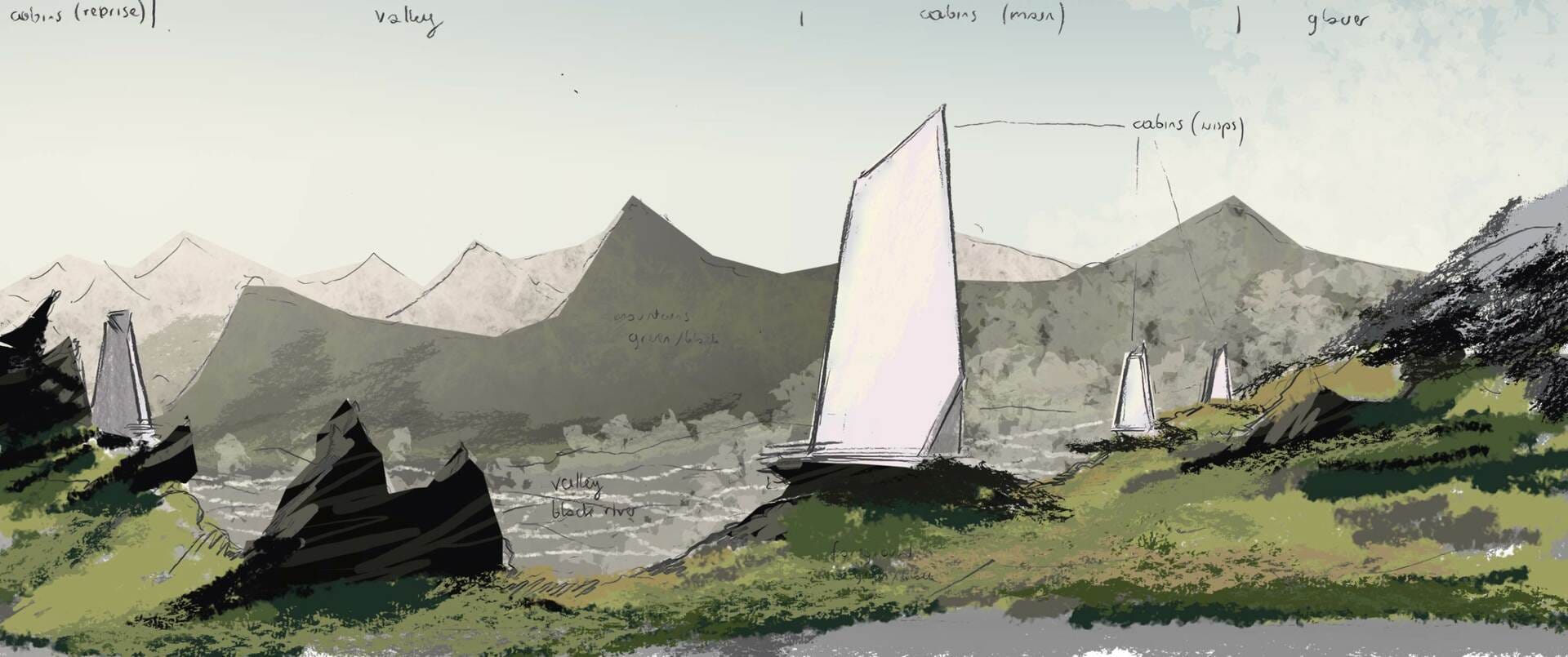
How did you choose the environment where you were going to set the images?
Frankly, it came quite naturally to me, and I didn’t give it a lot of thought at the beginning of the project, but I can try to share some of what went into that.
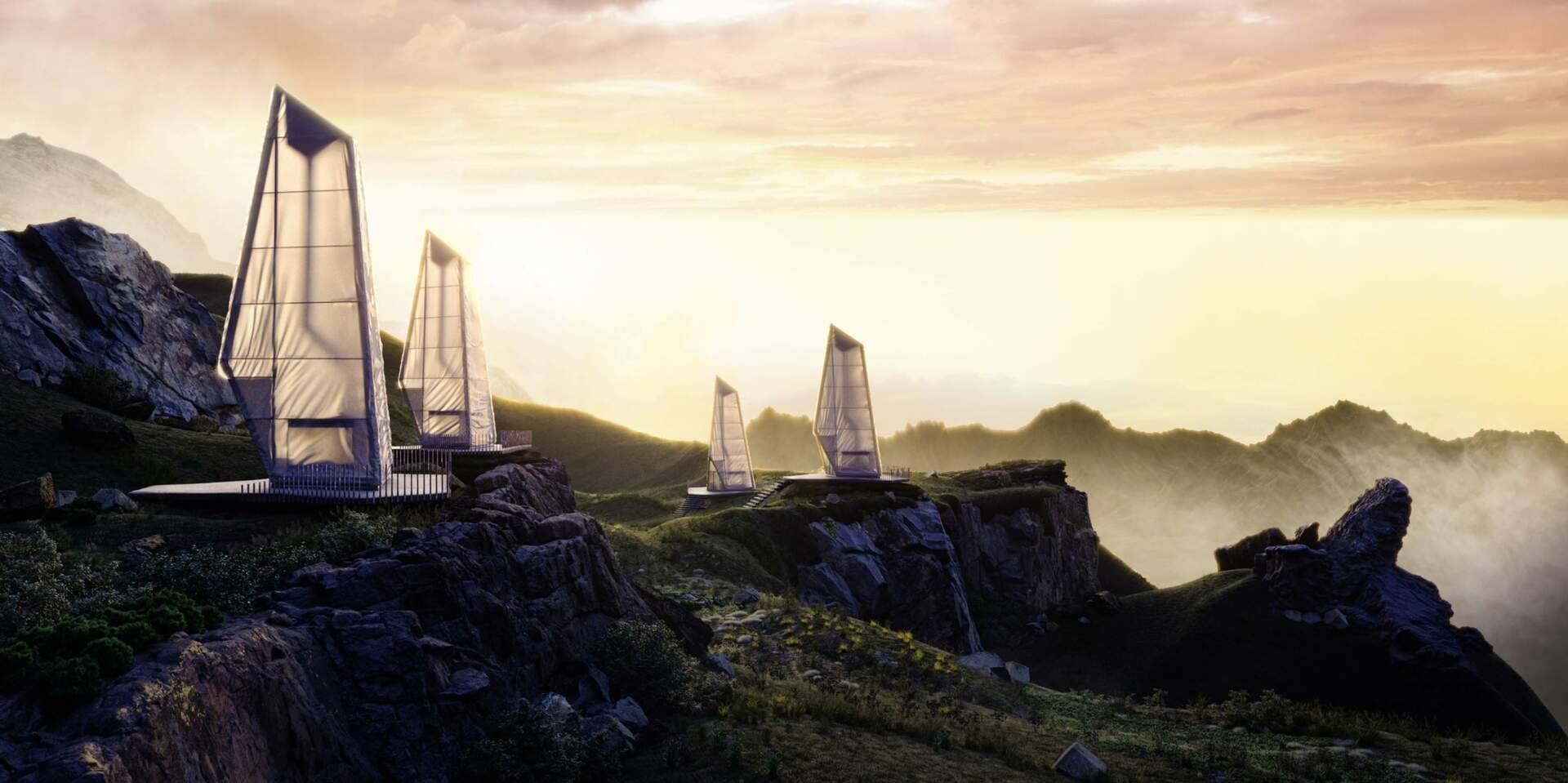
Mostly, it comes from some personal experience of the place. Thorsmork is a diversified valley with a beautiful color palette and interesting rock formations. Although it’s pretty close to the booming Icelandic tourist routes, it remains relatively tranquil due to the big river crossing on the way there. That meant that this place gave me the chance to create some plausible scenes which evoke some serenity in combination with chilling hints of raw, untamed, besieging nature.
What inspired the look of the cabins themselves?
I wanted them to stand out from the environment, and be deeply poetic – even to be completely naive in this poetry of theirs. I wanted something that would be never built there, thus provoking the feeling of some elusive beauty, sitting somewhere between the formal sacrum (axis composition, mandorla) and the primal anxiety of being besieged by the unknown.
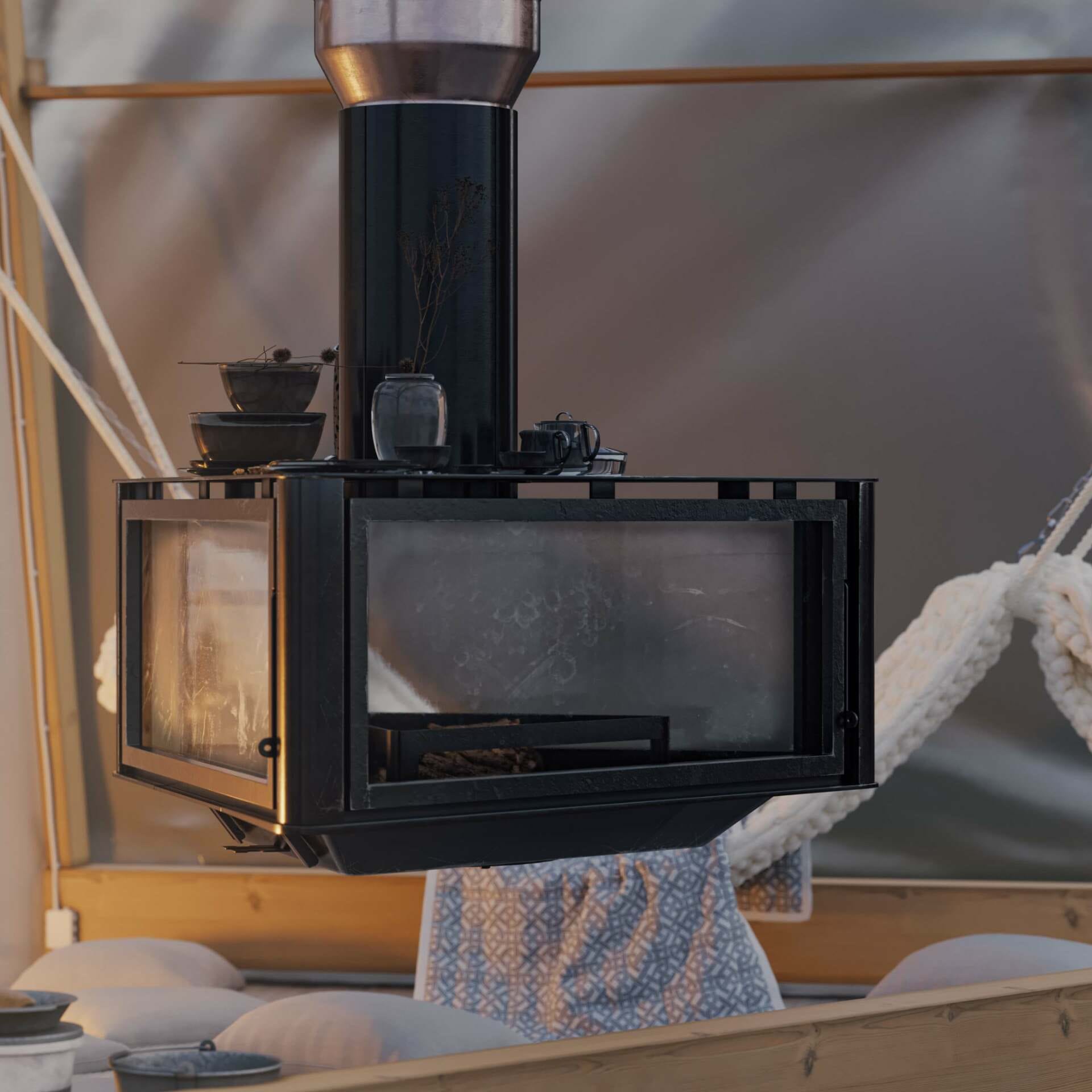
There are two main sources of inspiration. The first one is the archetype of the ancient shelter with a central fireplace. The second one is about the simplest geometry that contrasts with the complexity of the environment. Examples here can be the black monolith from “2001: A Space Odyssey”, rectangular light sources in some photography works of Benoit Paillé, and the series of metallic balls by Dillon Marsh.
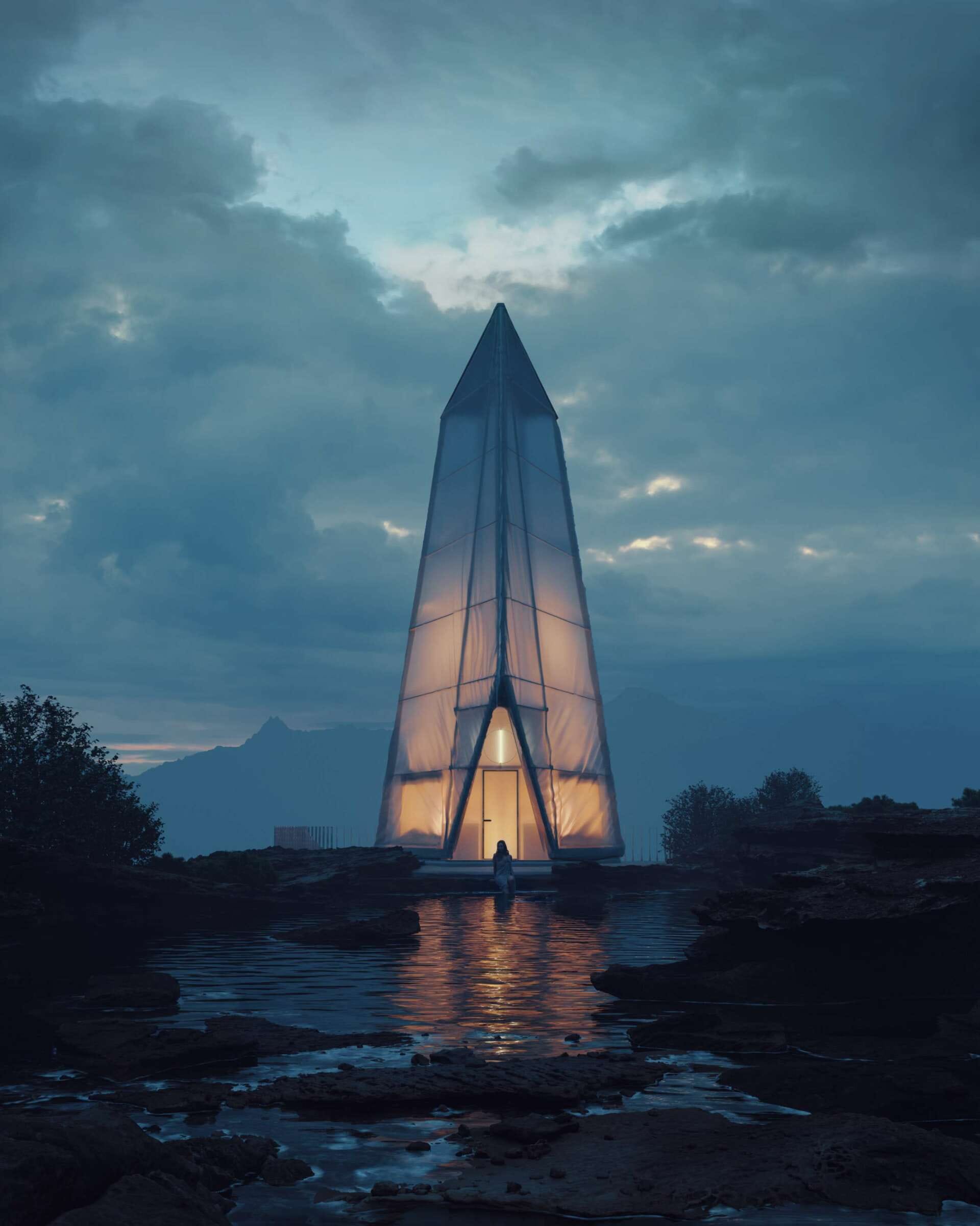
The simple form becomes the great mystery in this juxtaposition. It gains the quality of an emerging deity or some intangible truth being unveiled in front of the incompetent mind. That’s why I imagined the cabins to be seen as a row of Nordic gods stalled at the mountain ridge. It’s the genius loci of this project.
Everything in the images is fully CGI? Even the people?
Yes, it is, with the exception of a few replaced skies. The people are 3D models from Human Alloy and Renderpeople (these are barely visible in the background). At first, I didn’t want to use people at all, but in the end they turned out to add some quality to the composition and a better feeling of the scale. I tried to keep their presence a bit oneiric, though.
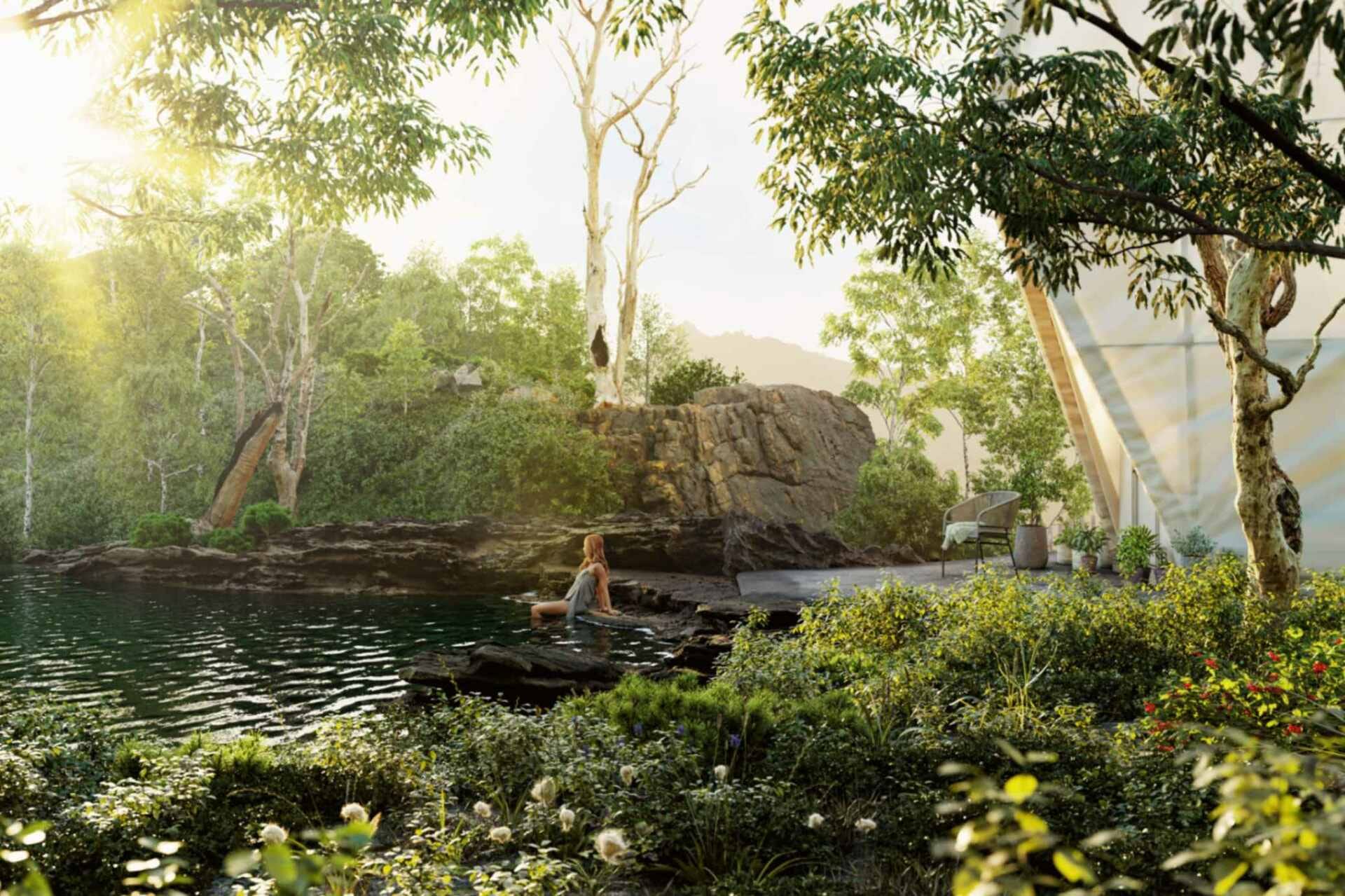
How did you discover Corona Renderer?
I had been trying Corona a bit since the early alpha, but I hadn’t made a bigger shift to it until recently. I had all my workflow heavily grounded in V-Ray and things always seemed too busy to make a transition to another engine. Northern Wisps was the first bigger project that I decided to do entirely in Corona, but since it took more than 2 months to complete, I also finished one much smaller project in the meantime (Stoicheia Geometrias – an image from that can be seen below).
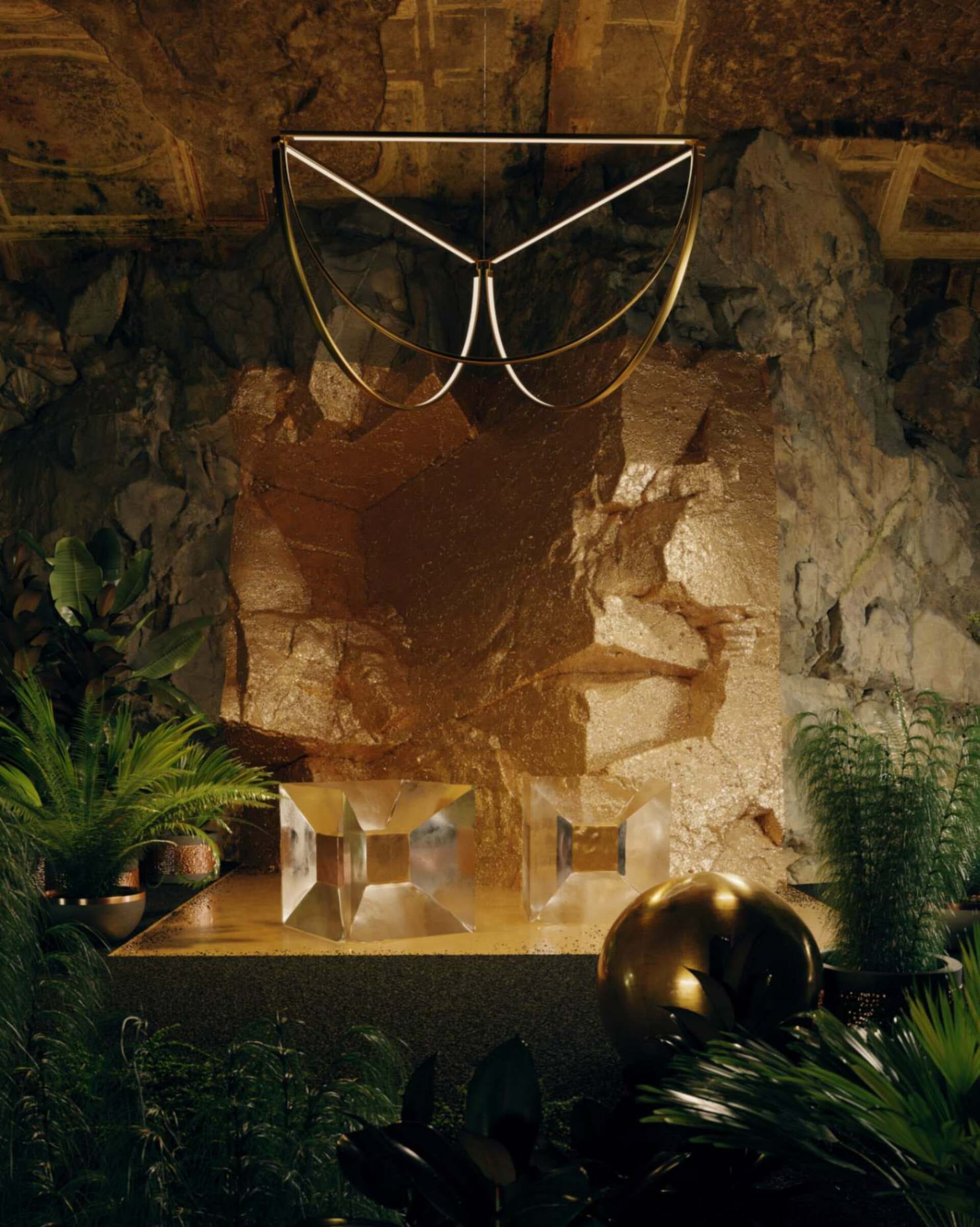
What does Corona let you do (or do faster) compared to other engines?
I feel there are a lot of small improvements (some are even hard to name) that make my work much smoother. I like the simplicity, features like the LightMix, and the efficiency of adjustments made in the framebuffer with a pretty pleasing tone mapping.
How much post processing was done on the images, if any?
Hardly any. I replaced a few skies and did a bit of color balance. I am also used to fixing glitches and painting some fine texture details in post. Nevertheless, those are usually only visible in a 100% zoom, and the overall raw feeling of the renderings was pretty much the final one for me.
What would you say was the most challenging aspect of creating this project?
Everything went pretty smooth and I didn’t find anything especially challenging. My first goal was just to make one decent rendering and have some fun alongside that, so I was never intimidated by the scope of the project.
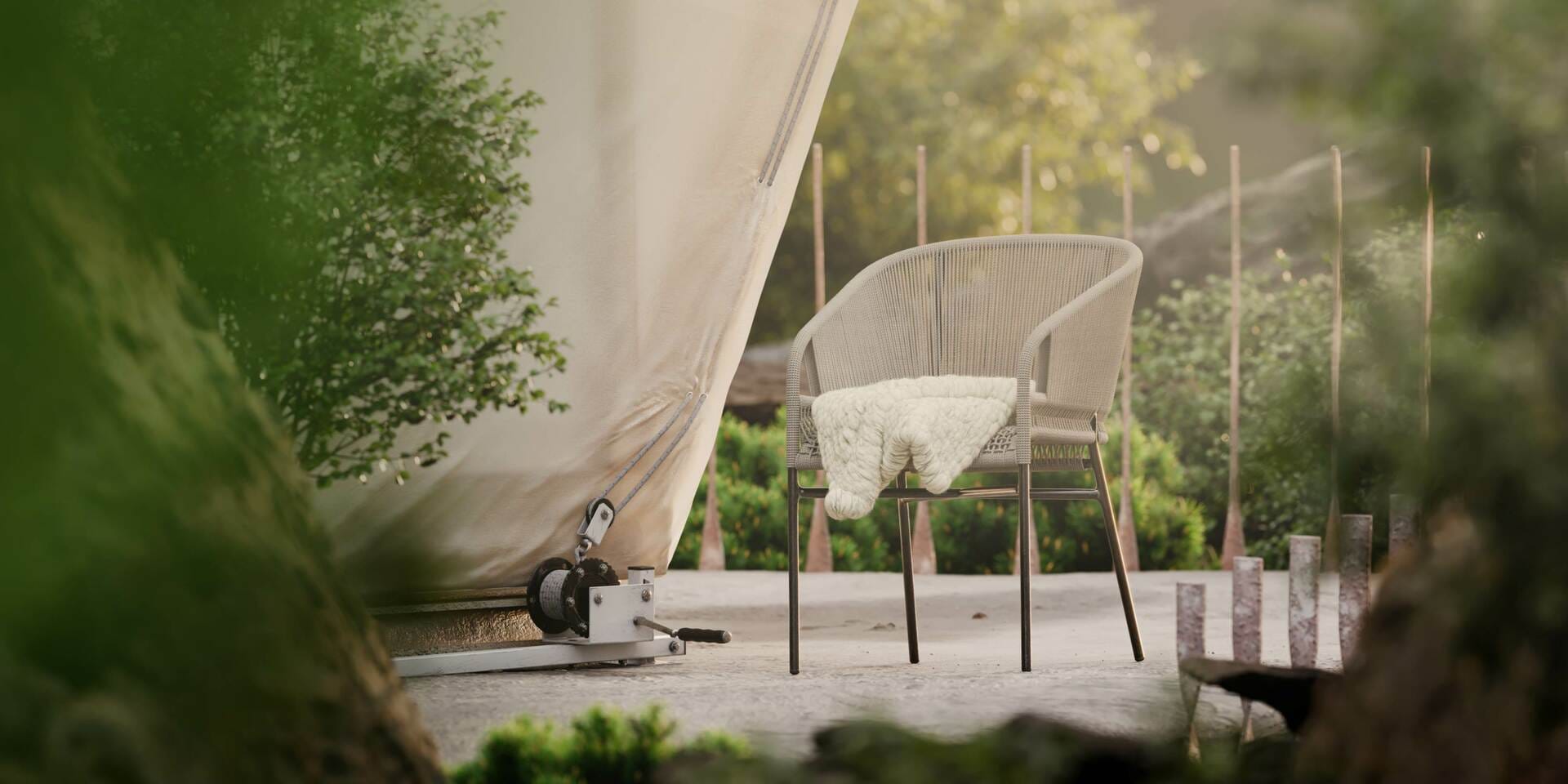
Certainly, after I finished the first, I started to work on the second one, then on the third and so on. The process was really organic. There were a few dead ends, scenes that I struggled with and finished without being especially content about the results. But I guess it is a quite typical situation!
Did you decide on the viewpoints first, and create the scene for them, or did you create the scene first then explore for great viewpoints to render from?
I would say that both. I needed to produce at least one 360 panorama within this project so I wanted this first one to be interesting all around: the view into the valley, cabins in the perspective of the ridge, barren rocks and glacier in the background.
The common problem with spherical exterior renderings is that the scenes are planned in a very traditional manner, so you end up with 40 degrees of view of high-quality and interesting content and 320 degress of space fillers! I wanted to avoid that, so I planned my first scene pretty thoroughly, starting from a sketch and setting up also three standard viewpoints in a pretty early phase.
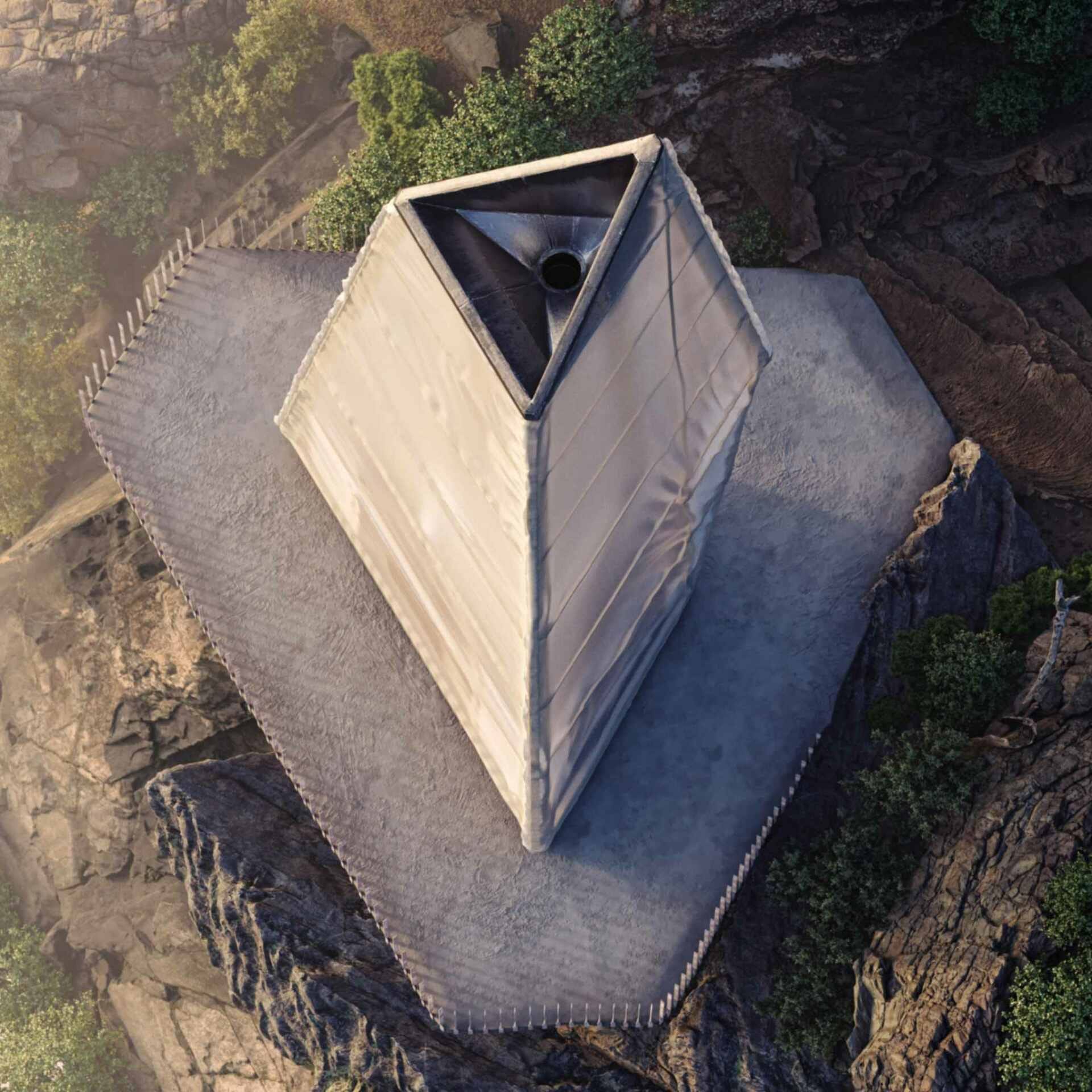
However, the project got bigger and contained numerous scenes. Some are just set to serve only one perspective. Some I found more successful than others, and decided to put more points of view within them. They are, nonetheless, still altered pretty significantly according to the specific camera.
You used quite a mix of software, including Megascans, Substance Painter, World Machine, and ZBrush – how easy was it integrating all those together?
I cannot complain on any difficulties, especially that my workflow was based on high-quality mesh export without depending too much on baking details onto the maps. Certainly, I got a pretty demanding set of scenes in the end. That abundance of geometry even made me adapt to a layers workflow in 3ds max, which is really not my style.

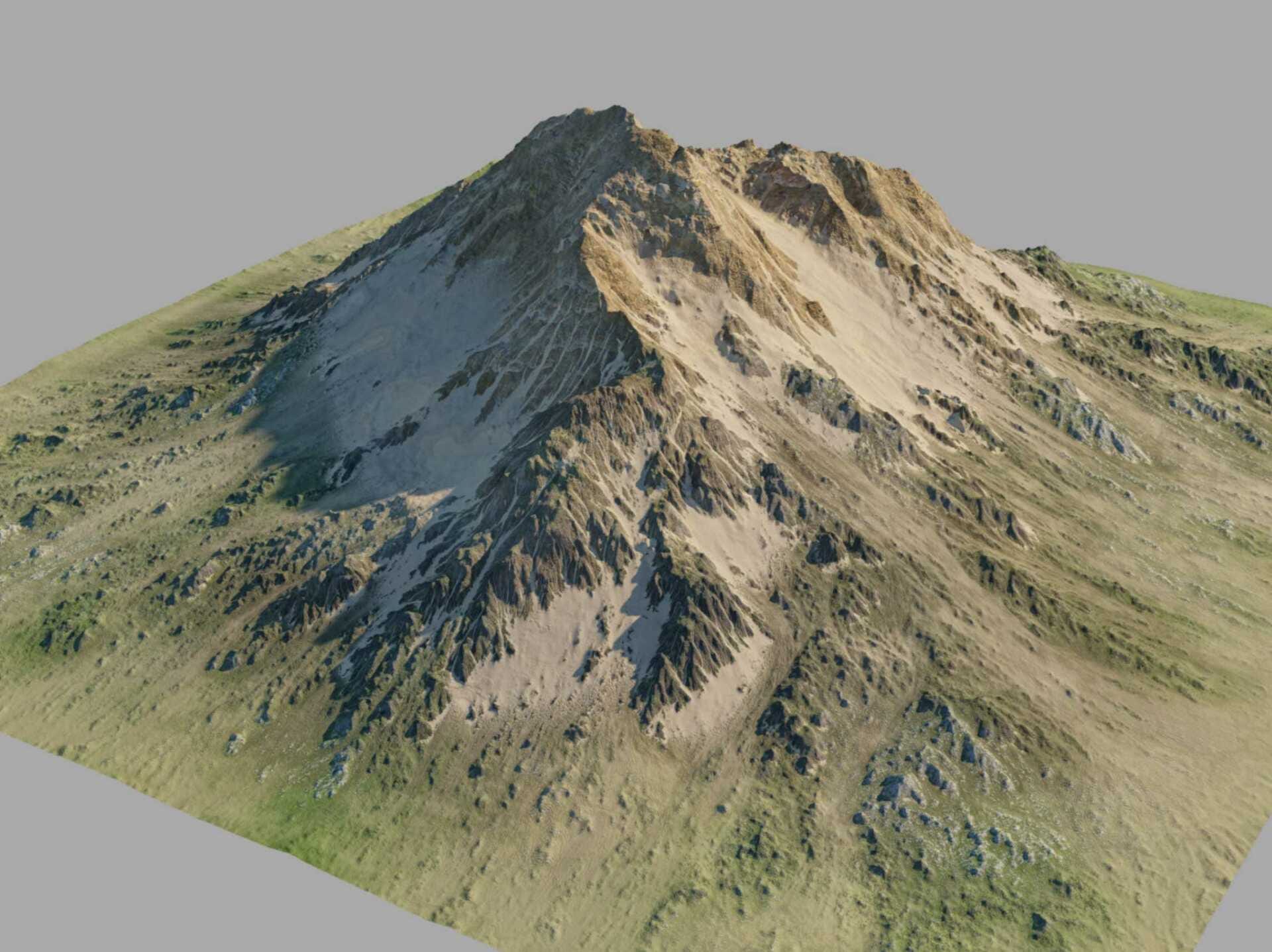
What inspired the astronaut in that one image?
I’ve had an urge to make some sci-fi piece for over a year and I guess it just burst out a little here : ) The Icelandic landscape has this extraterrestrial feel to it so it was just some minor side trivia that I wanted to explore during one evening. I don’t treat it as part of the main “body” of this project.
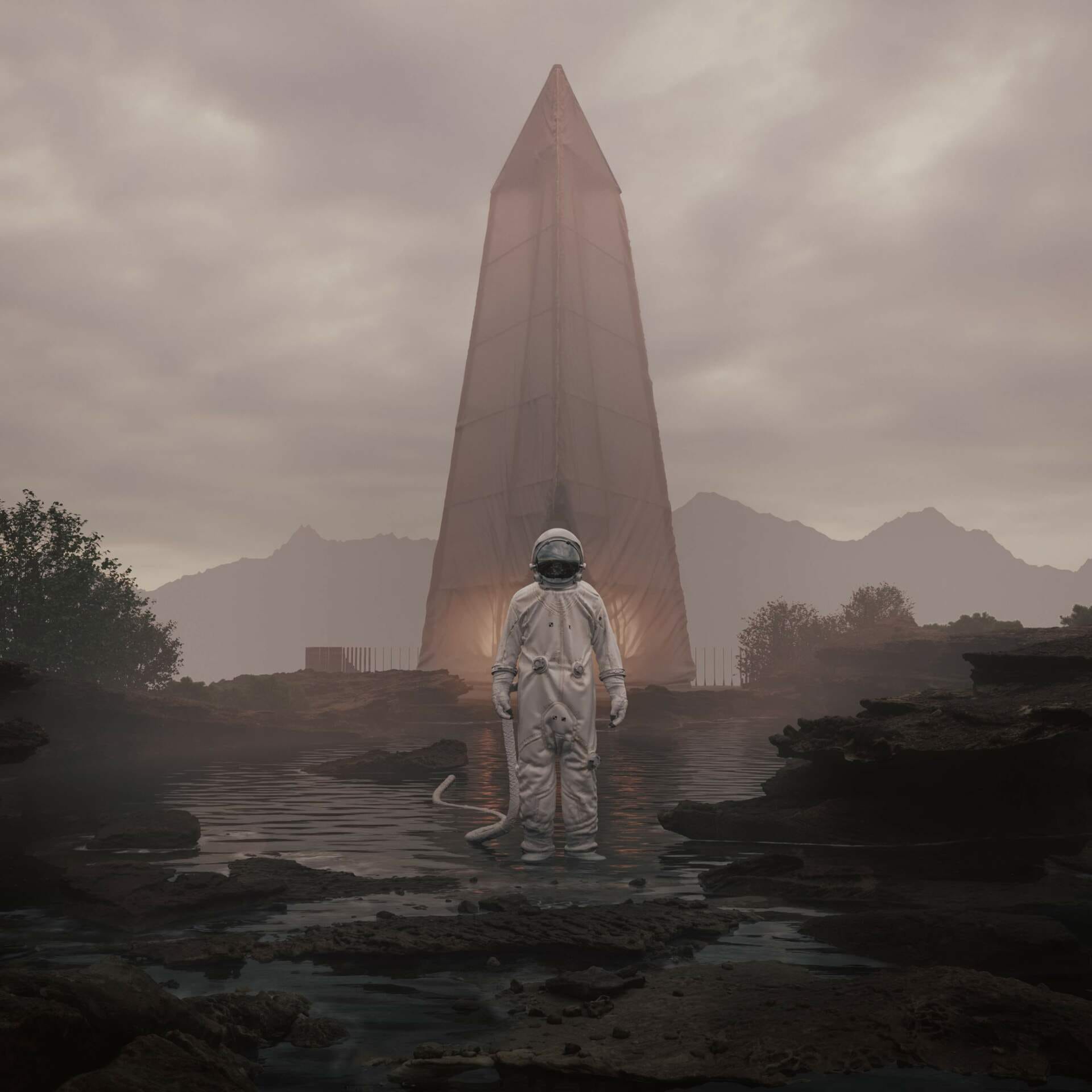
Any projects you are working on (or have coming up) where you will be using Corona Renderer?
I still plan a cinematic piece to complete Northern Wisps. As for the new projects, I’ve got a bunch of ideas but I’m still not sure yet which one I’ll pick up first.
How did you create the landscapes?
The macro-forms (usually placed in the scenes in backgrounds) were created from scratch in World Machine. I exported the high-poly mesh from there, as well as numerous monochrome maps (deposit, flora, wear, height) to use when creating textures.
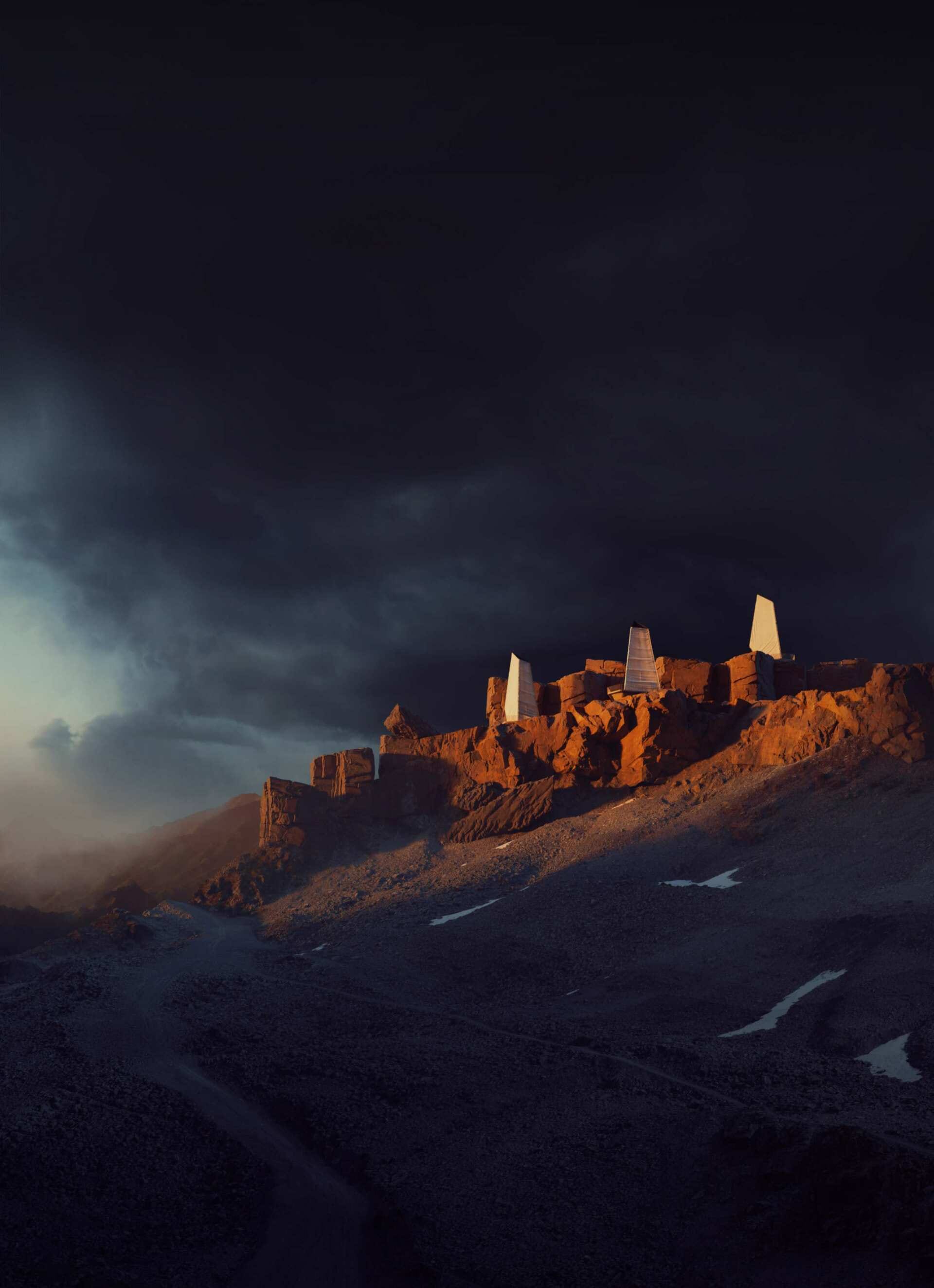
I used ZBrush to attain some minor custom refining. At first, I wanted to achieve the surface details by scattering environment assets (boulders, lichens) so I didn’t prepare any displacement for these objects. It turned out later that those details were barely recognizable in fog anyway, so I turned the scatter engines off in order to save computing resources.
However, due to this decision, I ended up with occasionally having the silhouette of the terrain on the horizon looking too smooth. I fixed it in post but probably it would be better to get some proper displacement set up in the first place.
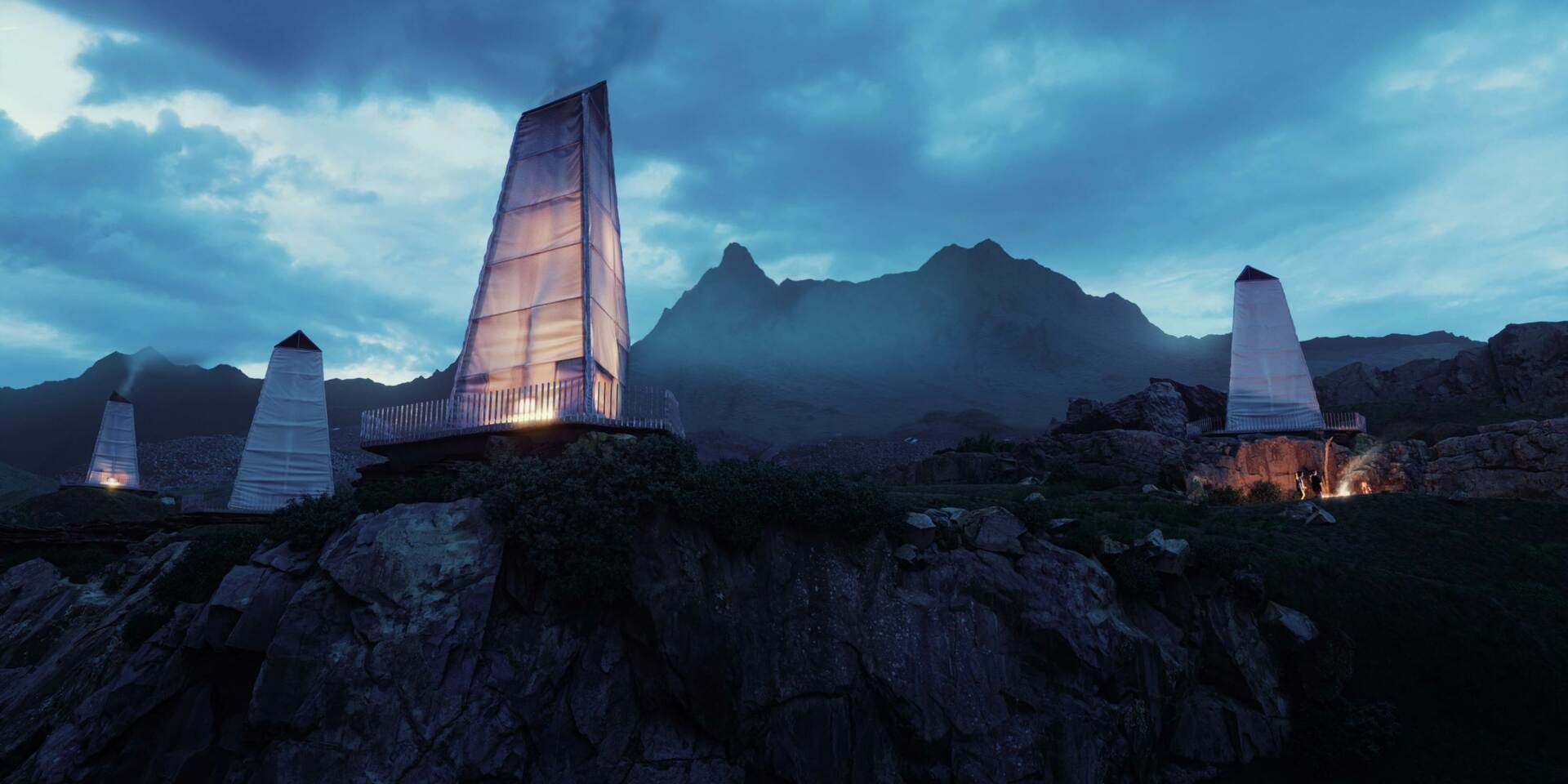
The landscape closer to the camera is primarily sculpted in 3ds Max so as to get the rough base on which I could manually place hero assets (ie. bigger rock formations). I adjusted the slopes afterwards according to those objects and gave it the final touch in ZBrush. In the end, I scattered a lot of low vegetation in this area so I didn’t have to produce very intricate surface.
The river plane was manually painted in Photoshop in 16k resolution over the satellite photos of Thorsmork. I also got all the necessary maps from there.
Did you need to tweak any material settings? How did you create the translucent material for the cabins?
Most of the materials were pretty simple and behaved in various lighting conditions as anyone would expect. I took special care only of the external white cover of the cabin. At the very beginning I tested it in numerous settings to get some sweet spot for a universally pleasing outcome, mostly by trial-and-error. However, after I achieved the result, I didn’t need to alter it in any scene.
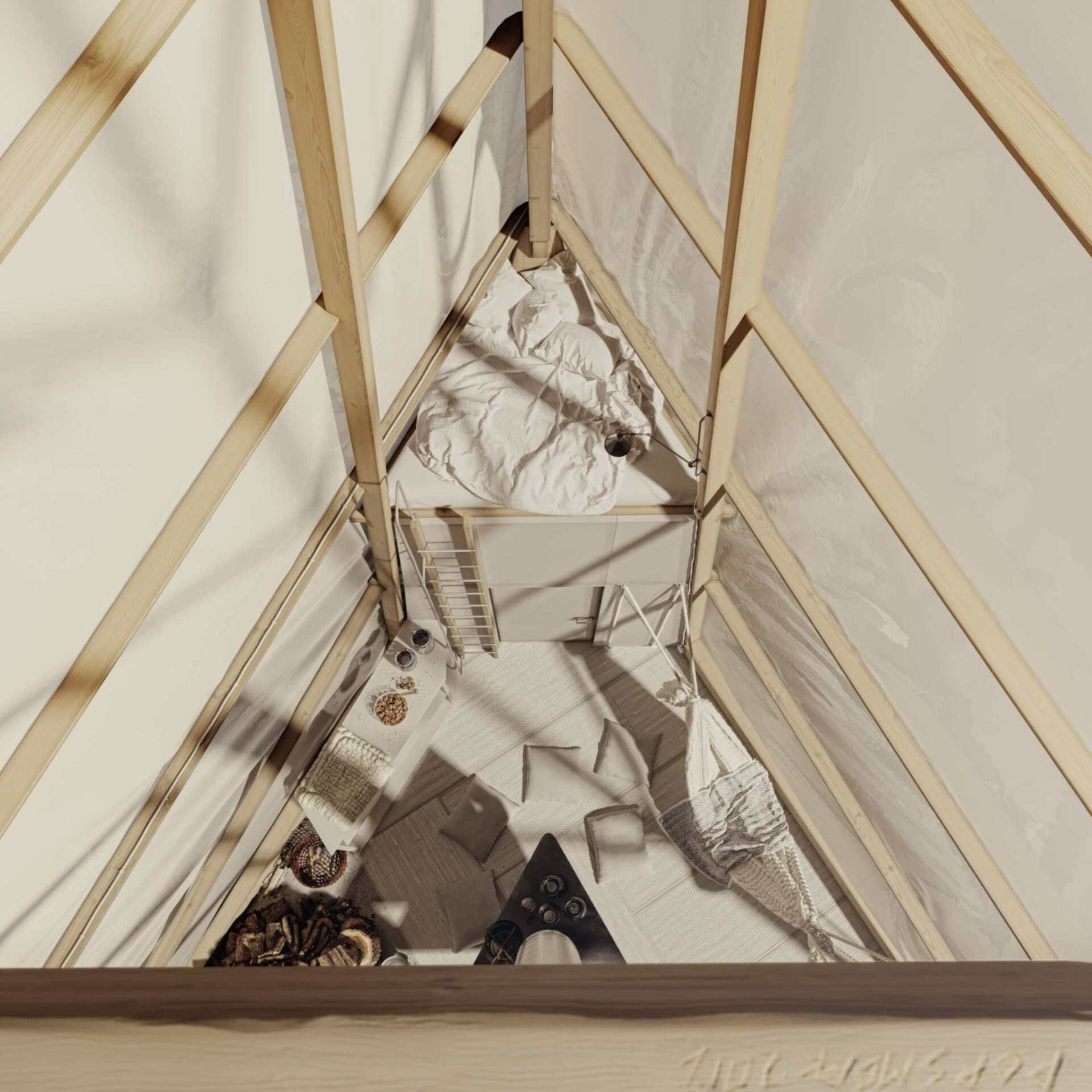
This fluoropolymer is based on some very delicate maps of plastics from Megascans with some additional wrinkles and smudgy dirt in glossiness slot. It is defined by both translucency and blurry refractions.
How did you scatter / place the plants and rocks?
All the rocks were placed manually. I used Forest Pack to scatter low vegetation in one scene and it was assigned to several areas so as to give the sense of variance.
Bartosz Domiczek
LINKS:
Website
Artstation
Behance





